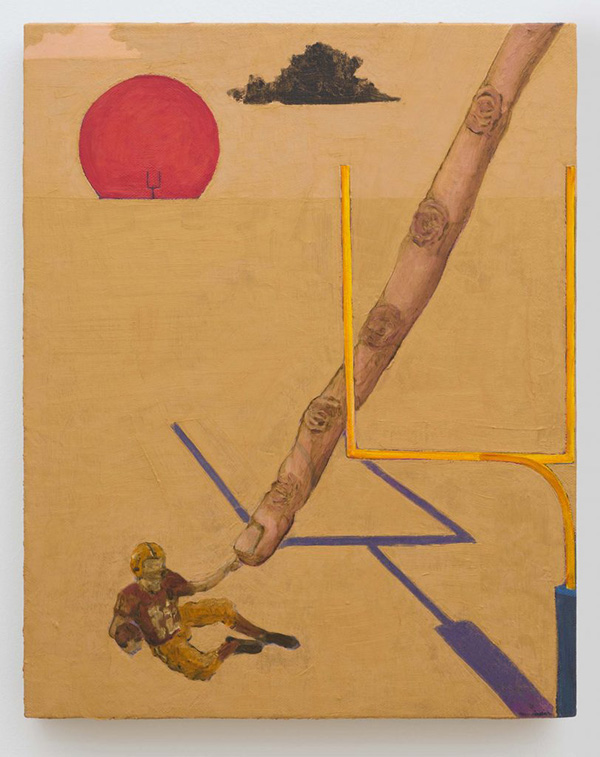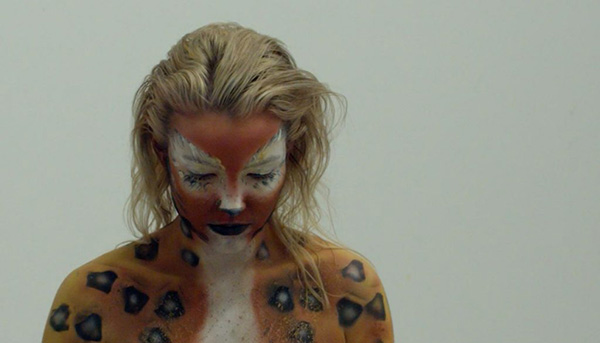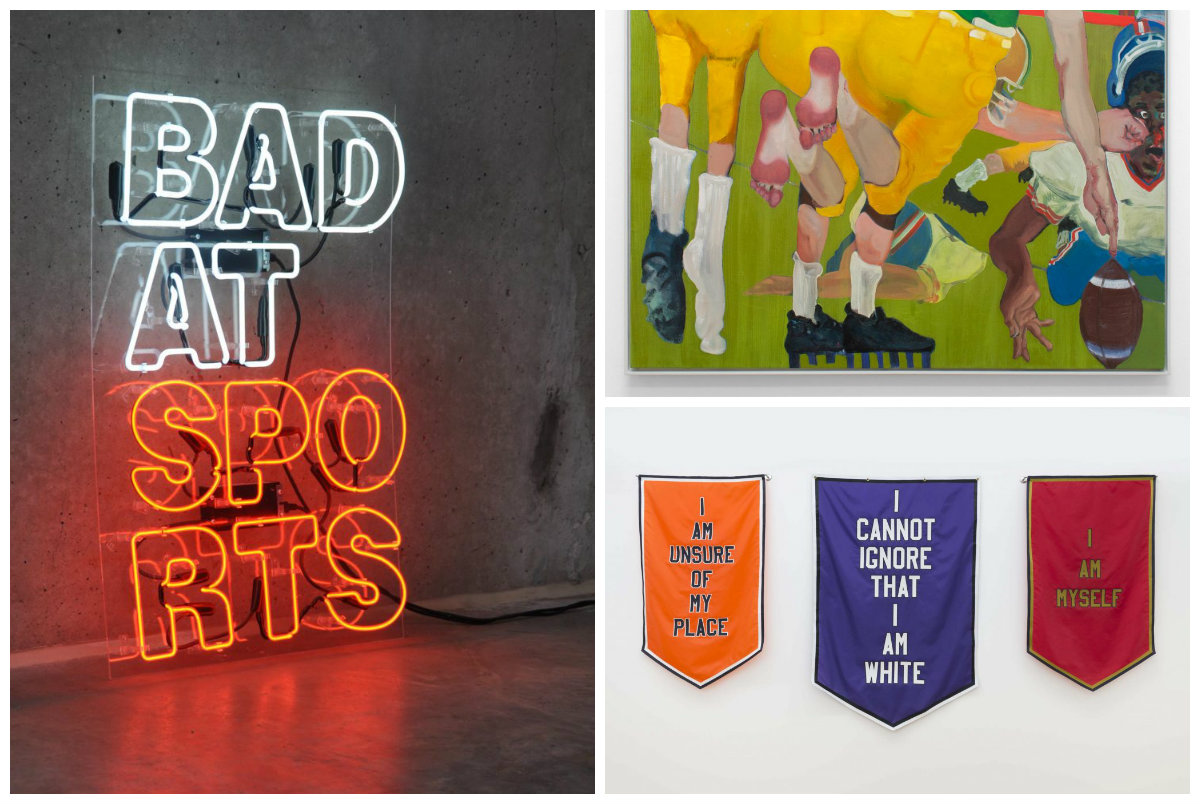Art is more like figure skating than ice hockey. There are generally accepted parameters, defined styles, and agreed-upon vocabulary—but there is also an aesthetic black box beating at its heart; in art, as in the women’s long program, subjectivity influences the scoreboard.
It is perhaps not unusual, then, that West Town’s Western Exhibitions (1709 W. Chicago Ave.) is currently showing a group show themed around sports, Hand-Eye Coordination, on view until February 17. Eight years ago, art critic Abraham Ritchie published an article in ArtSlant, outlining the massive audience potential for an art and sports exhibition—especially in Chicago. In Hand-Eye Coordination, Ritchie answers his own call, curating works by “midwest-connected artists,” including Michelle Grabner, a well-known Packers fan, and Cheryl Pope, a Chicago Golden Gloves-winning boxer, reflecting the ways athletics permeate our society. After all, as gallery director Scott Speh wrote to Chicago in an email, “just about any subject is ripe for artistic inquiry, as long as the work is good, as it is in Abraham’s show here at the gallery.”
Aside from the physical beauty, sport is fertile ground for societal issues. Our most broad-based construct, enjoyed across many different demographics and in every nation in some form, it is little surprise that sport—tribalistic as it is—often finds itself an explosive, physical front in the culture wars. Hand-Eye Coordination recognizes this important element of sporting culture; works referencing social justice champions like Colin Kaepernick, John Carlos, and Tommie Smith dot the exhibition.
“Like all human endeavors there are shades of both good and bad things in sports—elements to celebrate and elements to critique,” Ritchie says, and in Hand-Eye Coordination, the lauding and criticism is most apparent in the artists’ depictions of professional athletes themselves. Chicago artist Ethan Gill, who’s known for his nuanced take on stressed male bodies in the midst of competition, contributes the painting God Giving Aaron Rodgers his Talent; here, the prostate quarterback reaches toward a five-knuckled finger descending from above, reminding us of the absurdity in how a game becomes a drama of biblical proportions.

Whether they’re being praised, taken down a peg, or something in between, the athletes in these artworks are all high-profile, and they are all men, save for Jacqueline Surdell’s Ah, Pussy, of the Sands No.4. In her photos and video installation, Surdell has painted her body with leopard spots and is filmed slow-motion as she measures her vertical jump.

The artist created this piece with the intention of illustrating the power of her female body within the context of popular culture and art history, but in this show, surrounded by images of male professional sports stars and historic Olympians, a different meaning is emphasized. As there are no professional women athletes present in any of the 43 works in the show, it’s unfortunately resonant that the only female body in this conversation is nude and (comparatively) amateur.
Hand-Eye Coordination succeeds in conveying so much about how our society regards sports, and the lack of female pro athletes in the exhibition is itself a reflection of a flaw in our culture: one that disregards the prowess and accomplishments of women athletes, preventing them from existing in our collective consciousness as important enough cultural figures to be either heroized or criticized, through art or otherwise.



